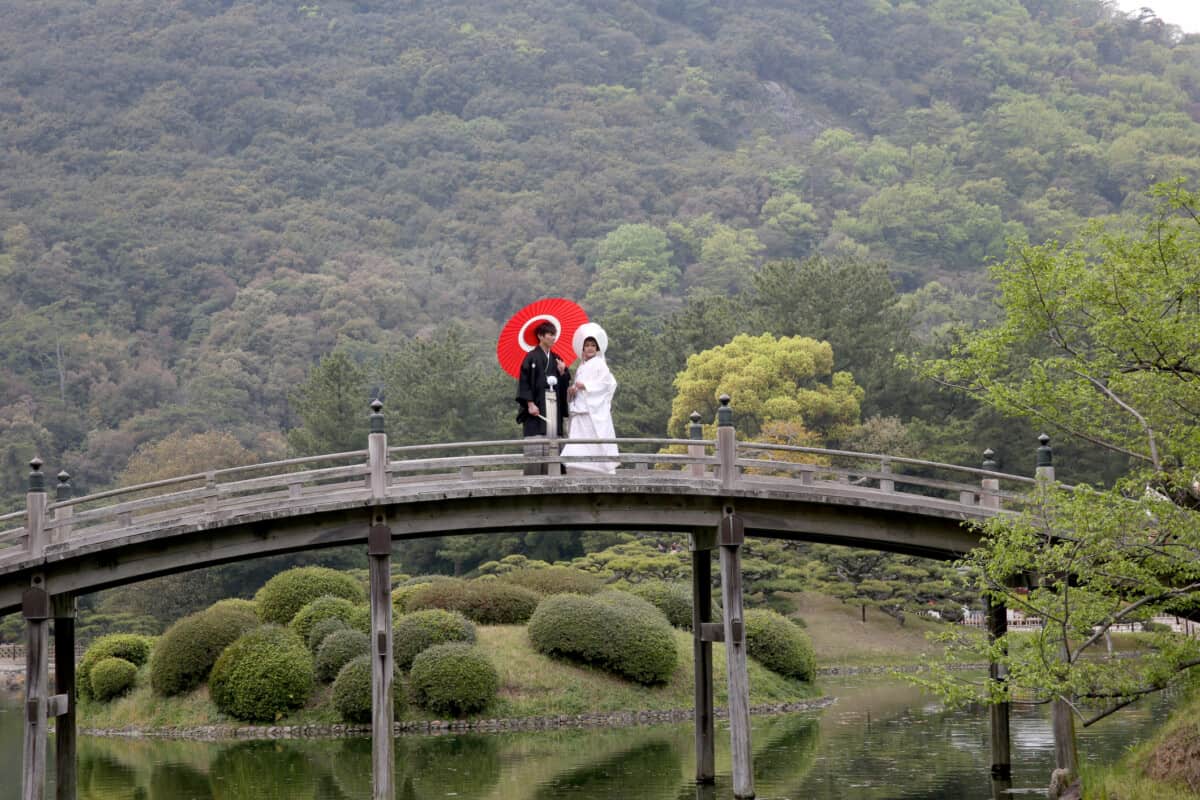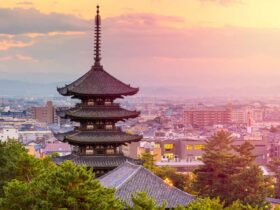One of the last times I was in Japan a good friend that I had not seen in many years was getting married. He had waited until he was in his forties and she was in her mid-thirties.
A common theme in Japan these days is to wait until later in life, although as he said, he waited perhaps longer than necessary.
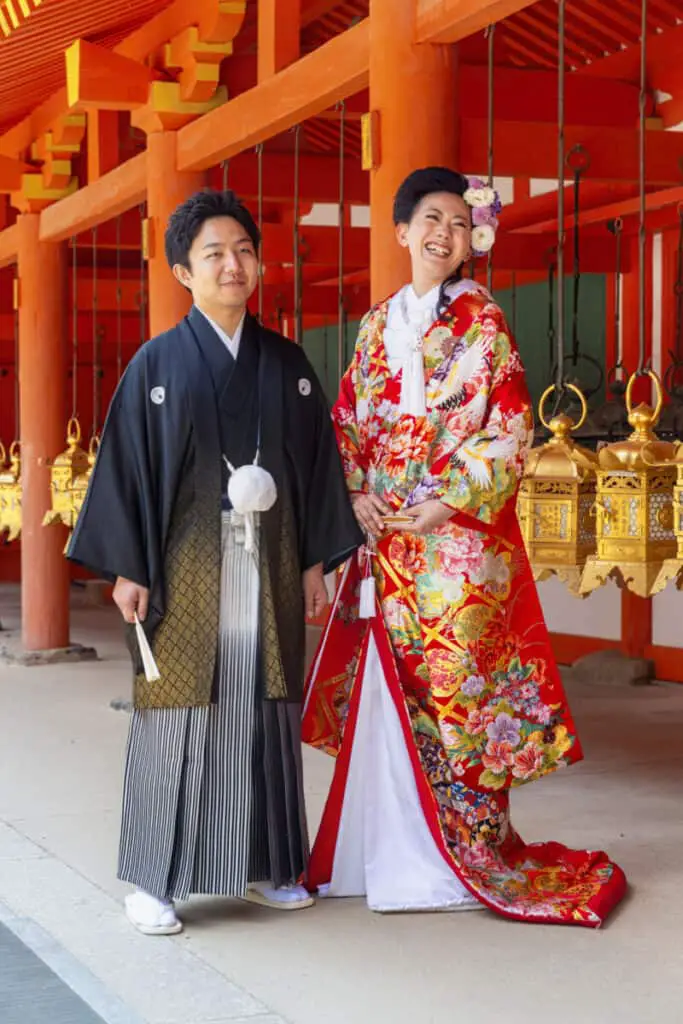
He is an American and she was raised in Tokyo. My curiosity was peaked at the type of wedding they would have. My friend John had a mixed family heritage and I wasn’t sure what to expect but he explained the types of weddings that were most common in Japan.
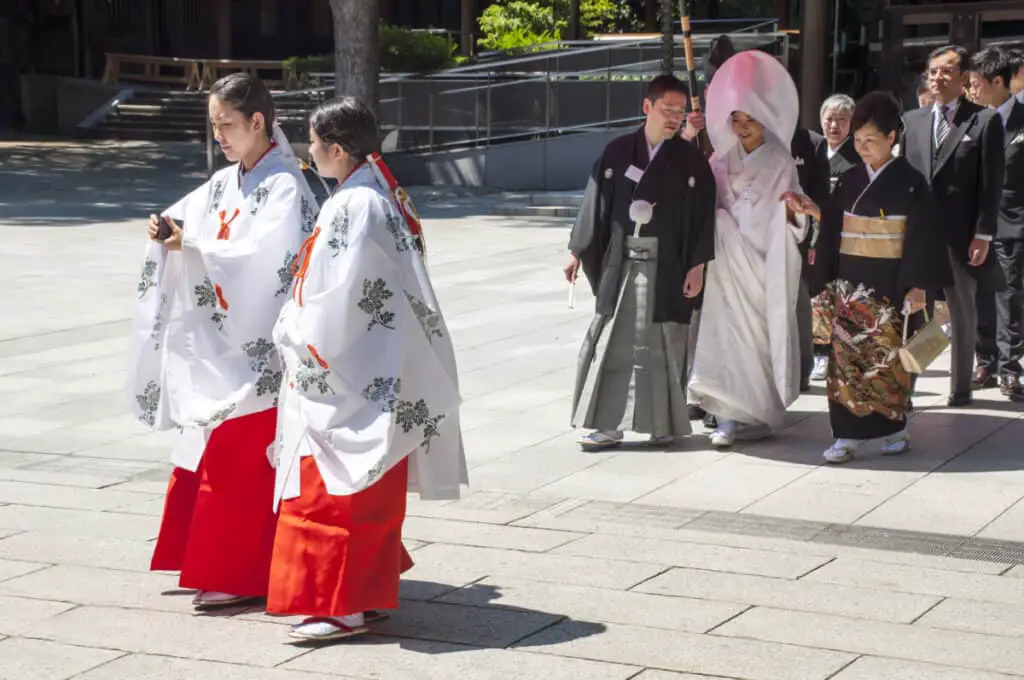
As a general rule, there are four primary wedding types in Japan: Shinto, Christian, Buddist, and non-religious. Some brides have been influenced by western customs and now choose to wear white dresses and have their marriages in Christian churches, even if they are not Christians.
The Shinto Wedding
Shinto marriage customs are held in the main area of a shrine and make up for around 15-20% of all Japanese weddings. After a ceremonial cleansing, a Shinto priest proclaims the couple’s marriage to the shrine’s kami (The Shrine’s god) and asks for a blessing. Sansankudo (meaning “three cups thrice”) is a tradition wherein the bride and groom take three tastes each from three cups of sake (rice wine).
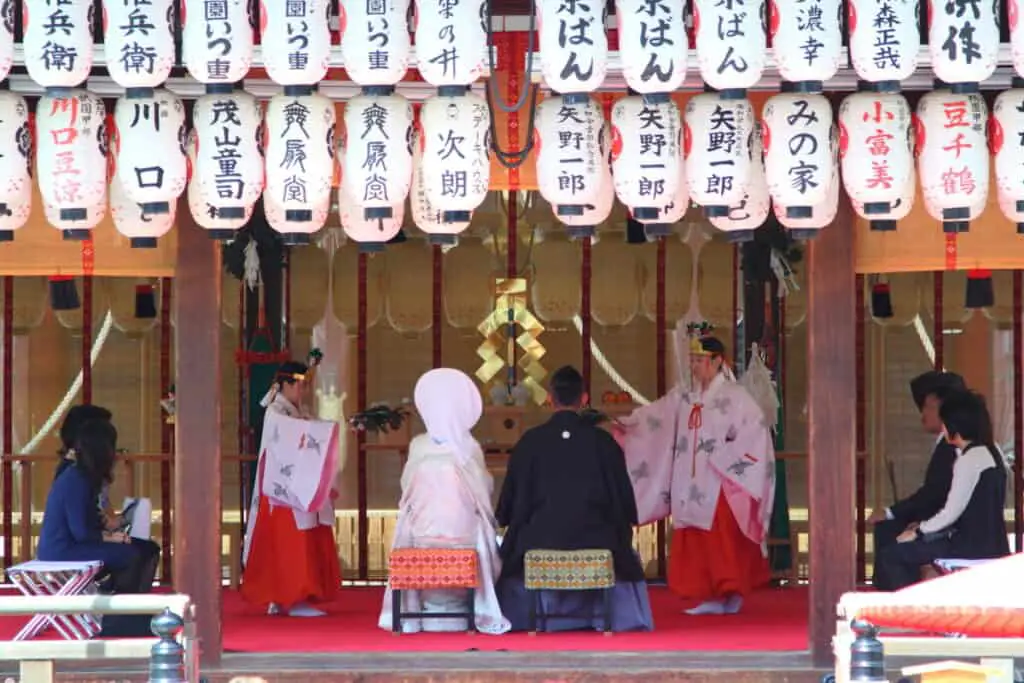
The brides dress in a kimono, sometimes a shiromuku “pure white dress”, or a iro uchikake “vibrantly colored outer robe” or kurobiki furisode the black and patterned kimono once worn by nobility.
Wedding ceremonies used this style of clothing during the Edo period (1603–1868), either with an open white watabshi or a kurobiki furisode the black and patterned (tsunokakushi). Men wear a black crested haori garment with a vertical striped and a loose-fitting skirt-like hakama.
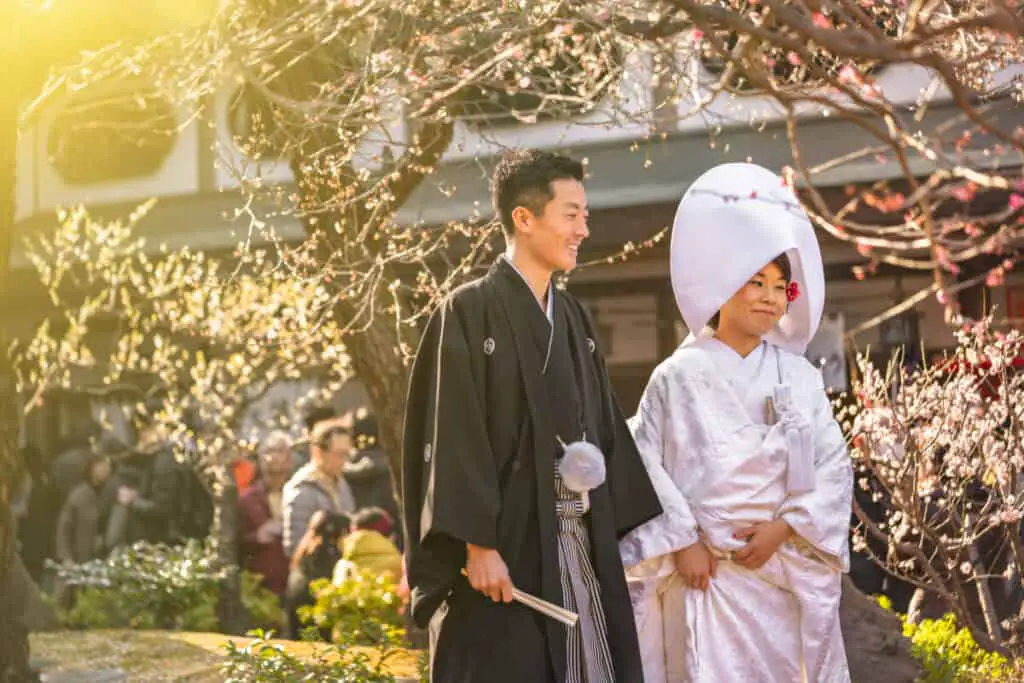
A Shinto wedding is a smaller type of event usually attended by the newlyweds, their immediate family, and personal friends. Wedding bands are exchanged in many ceremonies. Following that, the Miko (Shrine Maiden) does the holy dance. This ritual dance is named San-San-Kudo.
The Buddhist Wedding
A Buddhist ceremony pays homage to Buddhist tradition and shows the couple’s commitment to knowledge, empathy, and balance in their relationship. Unlike other religious faiths, Buddhists regard marriage as a secular affair, which means it is a personal decision rather than a holy communion.
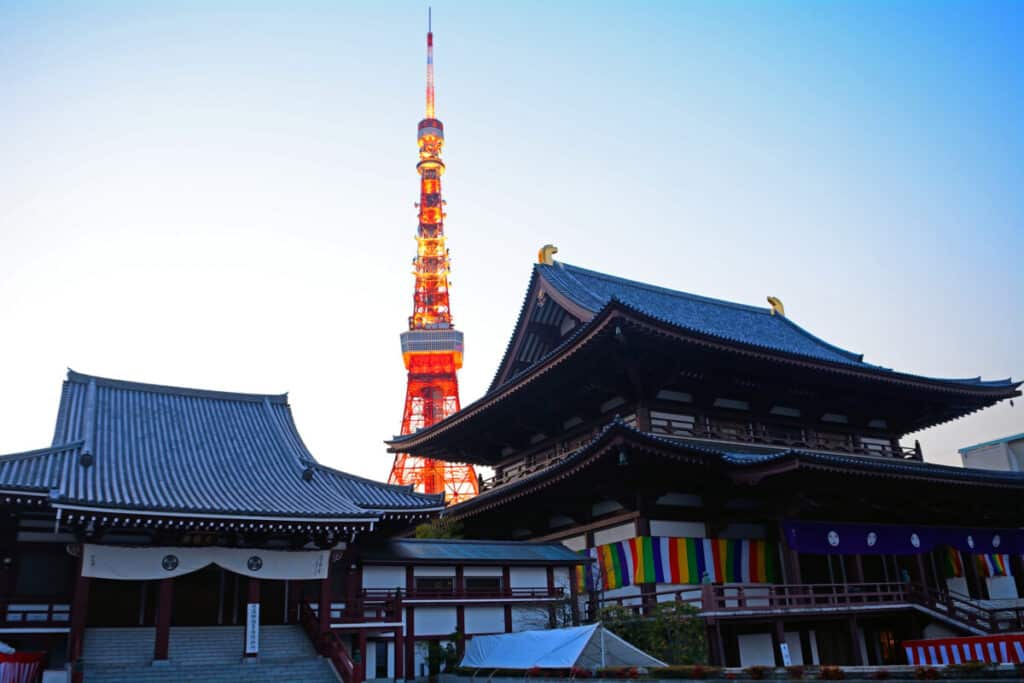
A Buddhist wedding is a joyous, informal event that represents the spouses’ history rather than having precise rituals.
Traditional rituals, such as tasting three sips of rice wine or Sake, are typically included at Japanese Buddhist weddings. The majority of them conclude with music and a lavish meal. The newlyweds are dedicated to waking their self-potential together and still show respect to family and friends.
Many people assume all Buddhist weddings take place in a temple. This is sometimes an incorrect assumption.
As a general rule, Japan’s Buddhist weddings do not always occur at a temple. They are usually held in someone’s home or a wedding rental facility. Some weddings, on the other hand, do take place fully or partially within a Buddhist temple.
What happens after the Buddhist wedding ceremony in Japan is over?
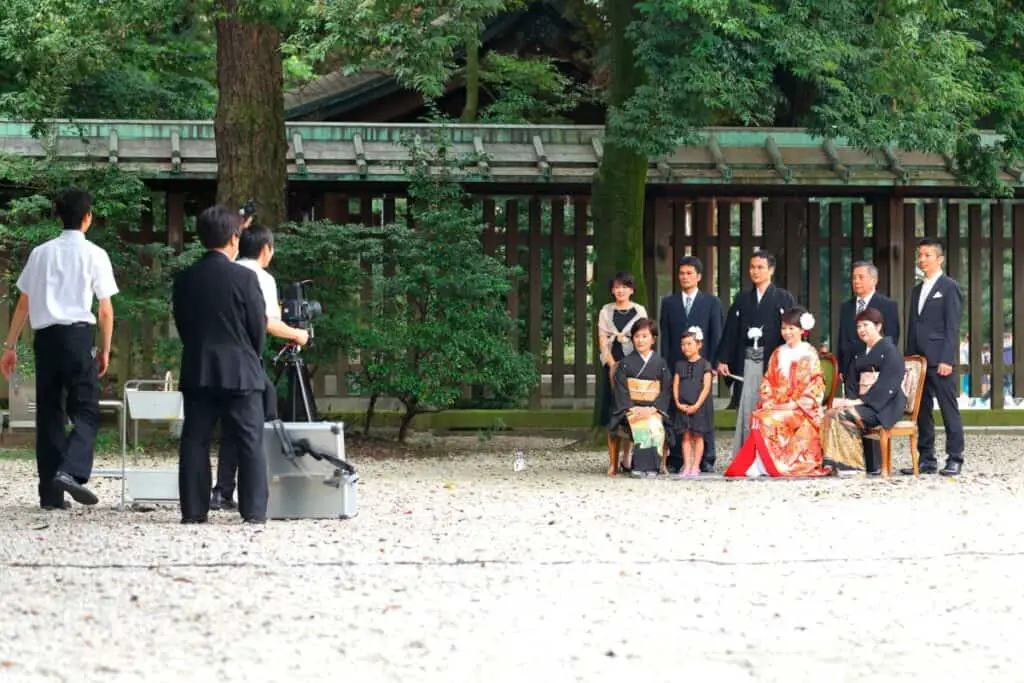
Following the wedding, the couple, followed by the temple priest, temple maidens, and family members, stroll across the temple grounds in their beautiful hakama and shiromuku – customary Kimonos are only worn at weddings.
Christian Weddings In Japan
Christian wedding rituals have largely replaced Shinto ceremonies as Japan’s preferred wedding ceremony. Christian weddings have risen from the margins to the foreground of Japanese culture in the last three decades.
The broad acceptance and popularity of Christian wedding ceremonies indicate a new level of acceptance and appeal for a religious event.

The efforts made by established Christian churches and the wedding industry to fulfill the spiritual requirements and desires of Japan’s predominantly “nonreligious” people.
Although Christians make up less than 2% of Japan’s population, Christian-style weddings currently account for three-quarters of the country’s marriages.
The Western wedding “priest” has quickly become such an established element of modern Japan’s wedding scene, after a tiny start only several decades previously.
Love is food for the soul
Japanese proverb
Christian marriages in Japan follow the Protestant style ceremony, despite the Japanese having unparalleled access to Catholic Churches. As a result, the service includes religious songs, benedictions, prayers, bible excerpts, an exchange of rings, a wedding kiss, and vows.
All of which is characteristic of conventional Protestant weddings. A bride is traditionally escorted into the room by her father before being “given” to her future husband, which generally entails bowing and holding hands.
The practice of removing the veil has gained a lot of popularity. During the veil removal, the bride’s mother sometimes removes the veil for her daughter.
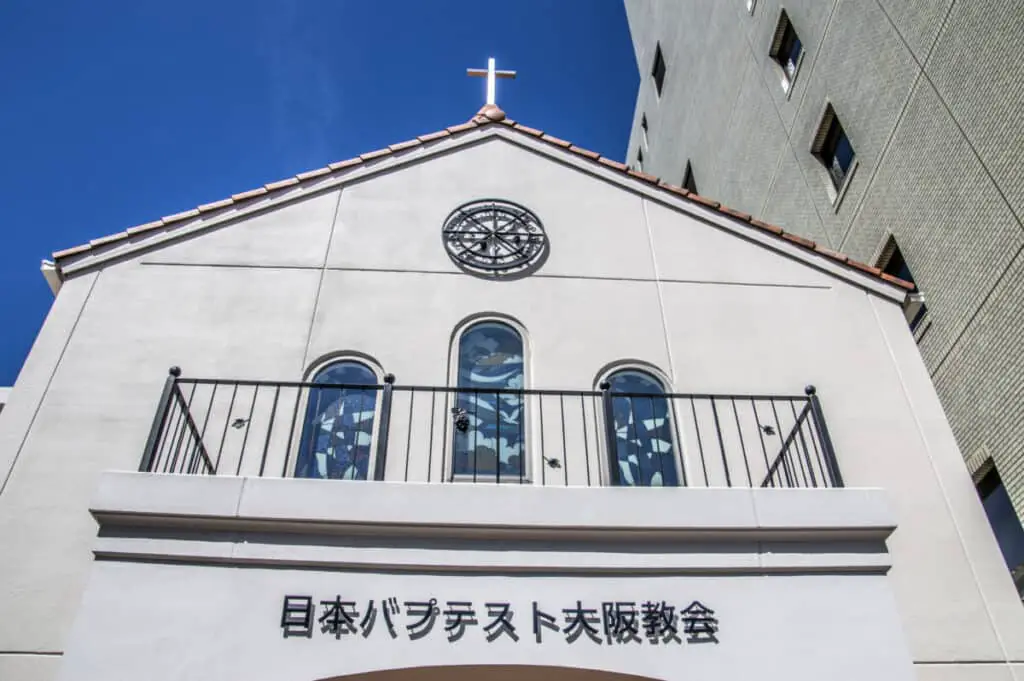
When a non-Japanese wedding minister performs the ceremony, it is usually a combination of Japanese and English spoken during the ceremony.
Non Religious Weddings
As a whole Japanese, non-religious or civil weddings are frequently held in a wedding hall, with a wedding Officiant conducting and guests are arranged around tables. Ceremonies frequently incorporate Western customs, such as the bride’s wedding gown and the groom’s tuxedo, they lack any religious aspects.
Documentation
Basic documents to marry in Japan are as follows:
In total all foreigners marrying in Japan must first get a certified Affidavit of ability to Marry from their home region’s embassy or consulate in Japan, stating that they are legally free to marry. Stating that they are not currently married and thus are legally qualified to marry.
For an international marriage in Japan, the following is needed:
- Affidavit of Competency to Marry (from embasy or consulate)
- Birth certificate of the foregner
- Passport or Japanese Drivers License or Residents Card
- Certificate of Marriage Notification
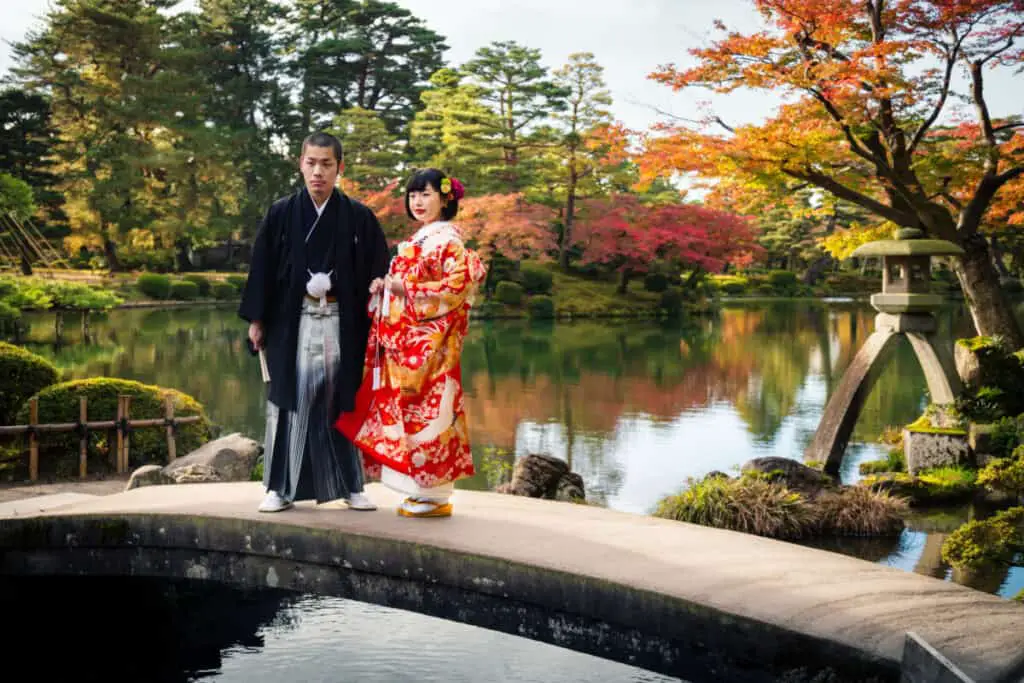
Family registry:
Within Japan, international marriages are governed by different rules. Because foreigners in Japan do not have their own family registry records, individuals who marry a Japanese citizen are recorded on the document of his or her family. A long-term dependant visa is available to the foreign spouse.
Family names:
When a couple marries, they must fill out a marriage registration form in order to generate a new registration sheet with their shared surname. Partners have been allowed to pick either the husband’s or wife’s name since 1947, following with an 1898 prohibition on separate surnames.
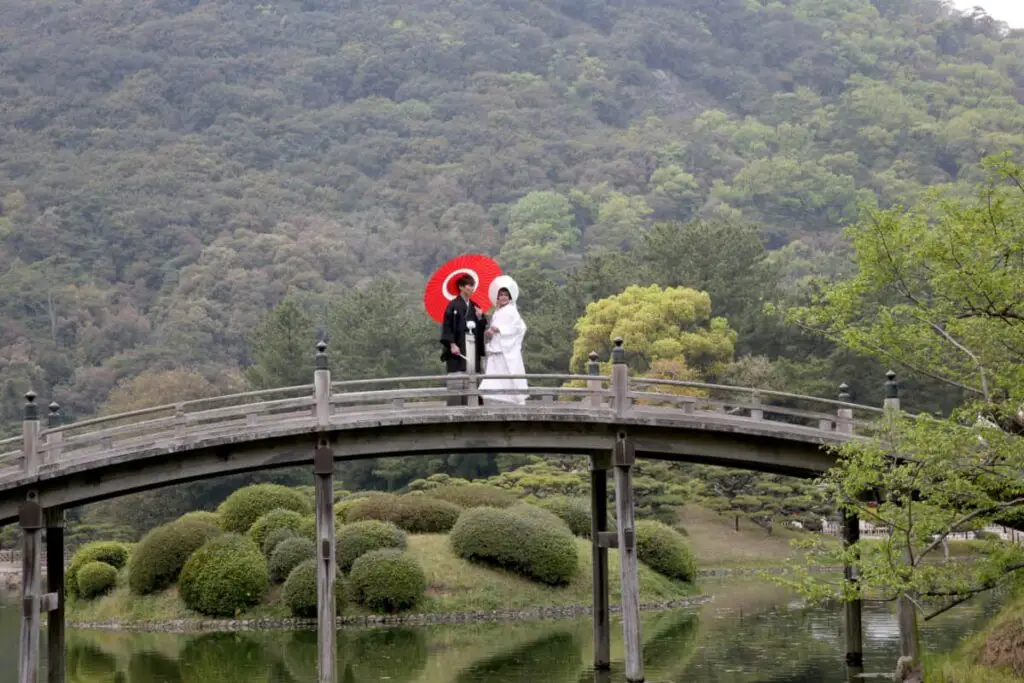
The decline of marriage in Japan:
As a whole, almost 2/3 of the adult population in Japan is married, with 13.9 percent of women and 3.1 percent of men widowed and 5.9% of women, and 3.8 percent of men divorced. Over the last 50 years, the yearly number of weddings has decreased, while divorces have increased.
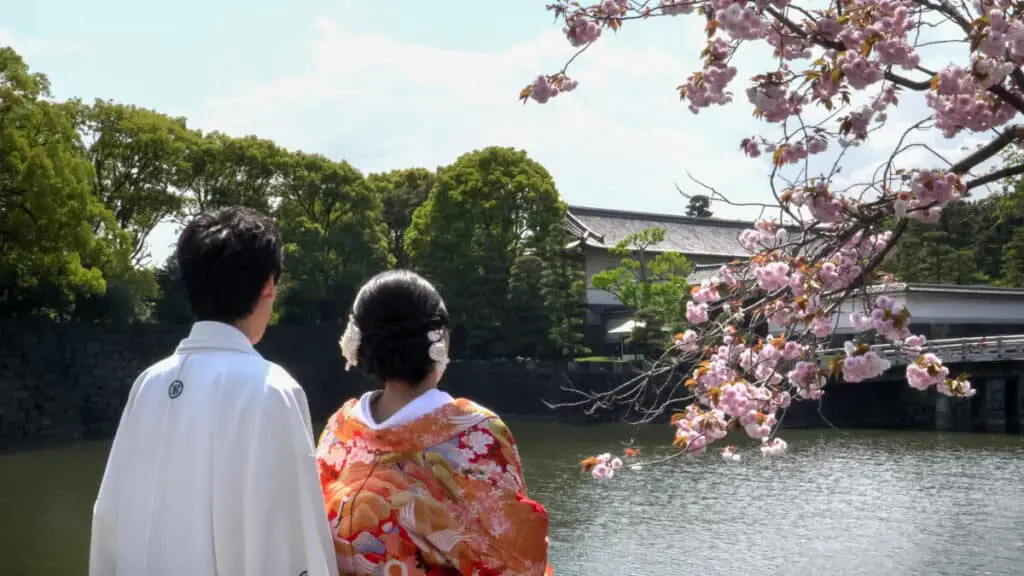
Courthouse weddings:
Japanese citizens are legally married without a wedding ceremony after they have changed their standing on their family registration forms. Thus many couples elect to simply do this if a large and expensive wedding is not in their budget.
My friend Johns’s wedding was a traditional western wedding with all the small details. I remember his wife was beautiful and she loved the idea of an American-style wedding.
A few years later they are still married and now have a small child. For many though weddings across cultures can be difficult and hard to make them succeed. It’s best to learn all you can about your future spouse’s traditions, customs, and social norms.
I myself have been with my Japanese wife for almost 10 years and she is truly a wonderful person. Sometimes I wonder if her unique culture is the reason for her being so special.

